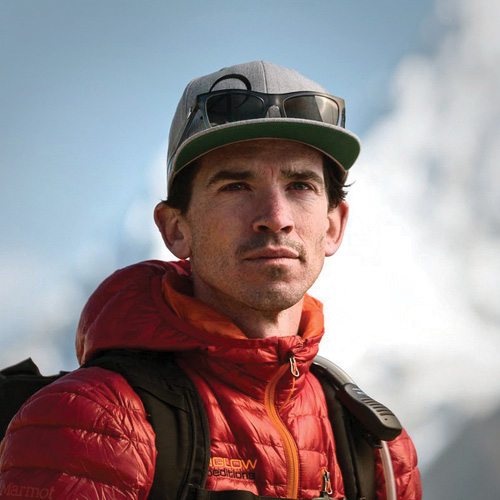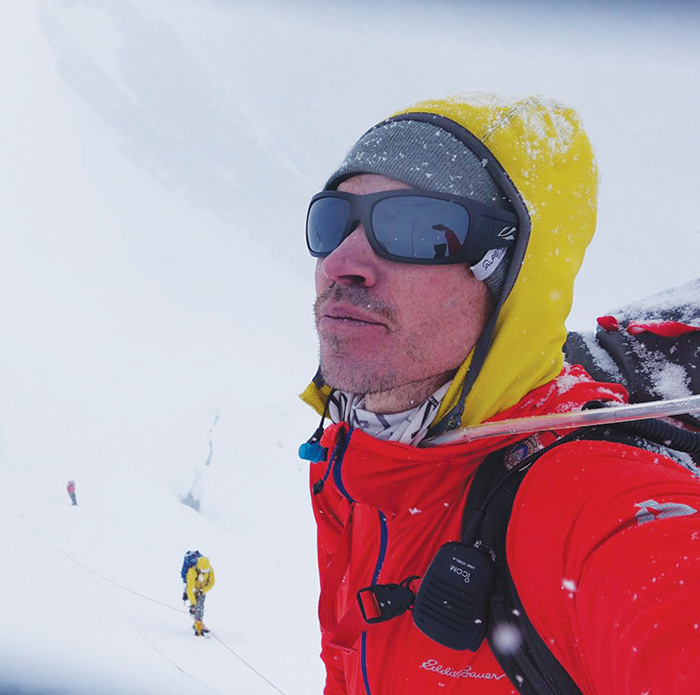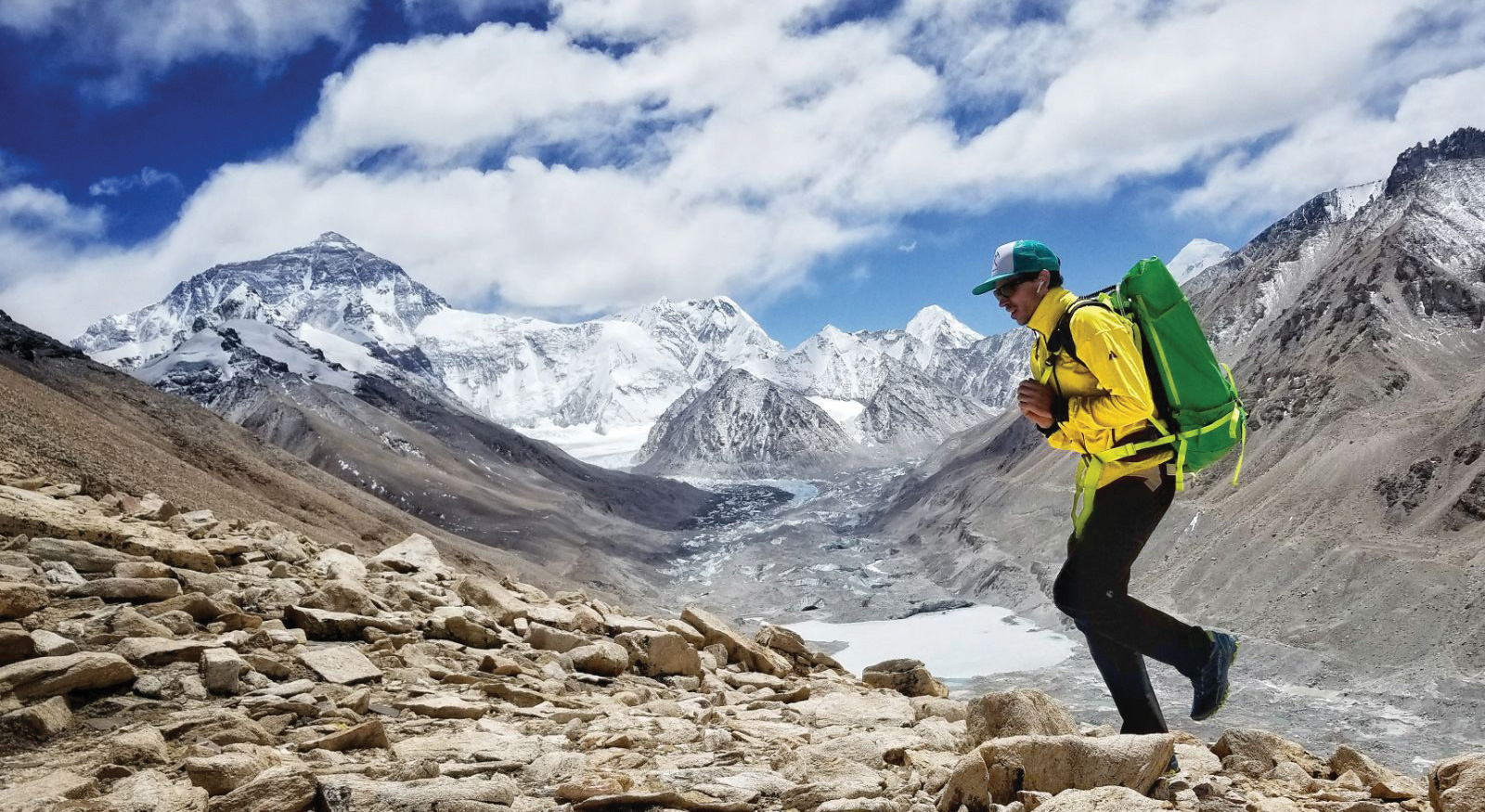Having summited Everest seven times while guiding full-time for 15 years, he has led more than 100 international climbing expeditions. Here’s how he gears up to scale the top of the world.
Body
For high-altitude climbing, endurance is a daily requirement. When I summited Mt. Everest last spring, an attempt I made without the use of supplemental oxygen, my summit “day” actually ended up being 43 hours long. All this was at the end of a grueling two-month expedition and acclimation process.
To train I focus on long low-intensity endurance training. This includes trail running in the mountains of Lake Tahoe in summer and backcountry skiing (ski touring) in the winter. As I prepare to go back to Everest this year, my average ski touring day consists of 4,000-8,000 feet of vertical up and down, keeping my heart rate below 145. I’ll do this 3-5 times per week.
Sprinkled into these low intensity workouts are muscular endurance workouts. This consists of 60-90 minutes of the highest intensity steep hiking, with up to 70lb of water strapped to my back. Why water? So, I can dump out the weight for the walk down to avoid damage to my knees.
Finally, at least twice a week, I combine core exercises with indoor rock climbing. This core strength is crucial to the rigors of a long expedition, and the upper body work from rock climbing keeps me capable for the technical steep slopes we sometimes encounter on big mountains.

Mind
My mindset plays a bigger role in climbing success than my physical fitness. It’s about establishing a willingness to try even when the odds are against you. When you find yourself facing a hostile climbing environment, full of pain, indecision and suffering, it’s your head game that’s going to get you through.
During training I try to set goals that purposely designed to be difficult for me to achieve. Being able to perform in the face of likely failure takes practice. You have to make it a habit, so that you train your mind to be proactive in adverse conditions – instead of reactive, which can be life threatening.
Nutrition
One of my failed summit attempts could be partially blamed on the diet I maintained leading up to the climb. Now, I follow a carbohydrate-restricted diet – because it’s essential that my body be fat-adapted while up high in the big mountains, where oxygen is in low supply.
I’m not generally fully ketogenic, but carbs make up only 20 percent of my diet on average. When in full training mode, I shoot for 4,000 calories a day. With limited carbs this can be tough – lots of butter, oils, nuts, seeds, avocado. And protein is also important for rebuilding muscle during hard training, so lean meat is definitely part of my diet.
Most importantly, I don’t forbid myself anything. If I really want a cookie or a slice of pizza, I go for it. I try to keep my diet realistic and fun, while still always working toward my goals.

Soul
I think it’s the travel to the mountains, the people I meet, the food I eat, and the views I see, that are more rewarding than making the summit.
While there’s a lot of pain involved in what I do, motivation and passion are almost never in short supply. If I do find myself struggling, it’s my climbing and skiing partners that keep me motivated. We try to make base camp life unique, and a bit quirky, whether that’s streaming Pixar films while a wind storm threatens to topple our tent, or having a shot of tequila after a particularly successful training day, it’s important to have little things to look forward to every day.







